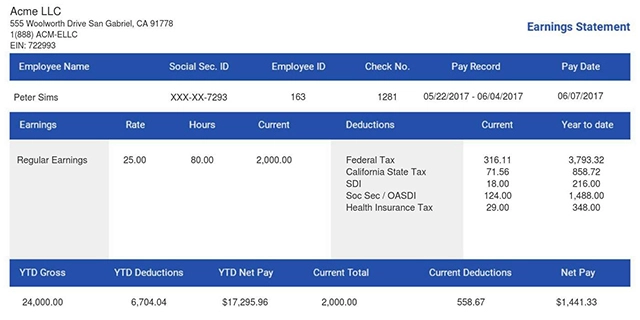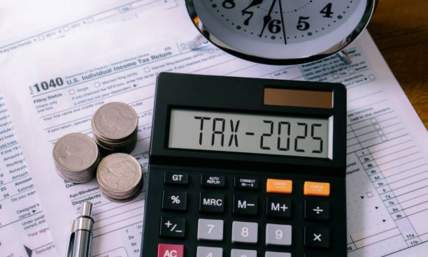What Are the Tax Changes 2025 and How Do They Impact Your Wallet?
By April 2025, all Americans are set to face new adjustments to the tax system. We’re talking changes that will impact everything from paychecks to retirement plans.
This year, more than 60 changes have been made to the code in different areas. These changes can potentially help you save more or take more from your earnings.
Obviously, you need to know what these changes mean for you. This will assist you in making financial decisions and help you save when filing your taxes.
Now, let’s discuss the major tax changes 2025 and how these may affect you as a taxpayer.
What Are the Updated Tax Brackets for 2025?
The federal income tax brackets have been revised for all seven rates of taxation in the year 2025. It is generally for the purpose of reducing people’s tax burdens. Thus, the rates have undergone no change and remain the same. They are 10%, 12%, 22%, 24%, 32%, 35%, and 37%. However, we’ve seen that the brackets themselves have changed.
In this way, people will not just be subjected to the next tax bracket due to inflation. And without any increase in their own purchasing power. Hence, these changes do not aim to overhaul the structure of the tax system. Nevertheless, they are still in line with the government's efforts to address taxation gaps.
In the case of single-filing, it is determined by the gross income earned. The rate is 12% and now reaches those earning up to $48,475. Then, it’s 22% for those earning as much as $103,350. People filing their taxes with the “married filing jointly” status will remain in the 12% tax bracket up to $96,950. For the 22% side, it's now up to $206,700.
At the moment, the highest rate of 37% is charged on incomes exceeding $626,350 for single filers. If it’s married couples that are filing jointly, then it’s a different amount, which is $751,600. This figure is higher compared to the previous year thresholds of $609,350 and $731,200, respectively.
These changes imply that IRS rules recognize your income may rise slightly in the year 2025. So, you may still not shift to the next tax bracket. Then, your income will still be taxed at a much lower percentage.
Biggest Tax Changes 2025
Aside from the updated tax brackets, here are some of the biggest tax changes 2025:
Standard Deduction Increases
It is clear that changes concerning the standard deduction amounts need no introduction. On standard deduction, both single and married persons filing separately will have their deductions fixed at $15,000. If we look at the rates in 2024, this is an increase of $400.
For joint filling, it increases to $30,000, $800 up from $29,200. Annual household income will likewise be set to $22,500, which translates to a raise of $600.
These changes are particularly notable since about 90% of taxpayers rely on the standard deduction. Most people don't use itemized deductions. In fact, for many Americans, this change could mean hundreds of dollars cut off their tax bill. That's without them having done anything to reduce it.
This move will make tax filing easier for millions of Americans.
New Hampshire Is a Tax-Free State
Since January 1st, New Hampshire has no longer had any income taxation at all. This makes it one of the few states without income taxation laws. As of now, there are nine states that don’t take these income taxes:
-
Alaska
-
Florida
-
Nevada
-
New Hampshire
-
South Dakota
-
Tennessee
-
Texas
-
Washington
-
Wyoming
Retirement Account Contribution Limits
In general, retirement savers will have substantially enhanced results. This is in ways that help them accumulate more towards retirement. The contribution restraints have been increased by the IRS for most plans. This helps the workers to deduct more pay before tax for retired persons up to $23,500.
There’s a general level of catch-up contributions thats accepted. It usually applies to the 50 and above age group. The limit is capped at $7,500. Adding all of those up brings the total allowance for additional contributions to $31,000 per year.
The age range from 60 to 63 years has a better chance provided to them. Under the new laws, they can now contribute the $11,250 as catch-up contributions. Now, the total amount they’re allowed to contribute reaches $34,750.
This comes with more benefits in terms of cost savings in a tax-efficient approach.
Health-Related Tax Benefits
Health costs have become one of the burdens that various people in society face today. Thus, the change includes measures that may help in offsetting the costs. The HSA contribution now stands at $4,300. However, this rate is only for those with self-only coverage. Now, the limit is higher for those using family coverage. The amount stands at $8,550.
The changes also touch Flexible Spending Accounts (FSAs). They now have contribution limits that can reach $3,300. The employers can also contribute up to $660 of unused FSA balances every year. Such changes contribute to providing taxpayers with the possibility of saving on necessary healthcare expenses.
Family-Focused Tax Changes
Some of the changes included in the tax measures are more relevant to families. The Earned Income Tax Credit has also increased the amount of credit that can be claimed as a family. It now stands at $8,046. However, the family needs to meet the minimum number of qualifying children, which is three. This was from $7,830 of the previous year of 2024.
For different families taking into consideration the adoption of a child, the adoption credit has also changed. It will now be granted up to $17,280. This credit allows the taxpayers to claim expenses relating to adoption situations. This could include the lawyer costs, court costs, and transport costs, among others.
Estate and Gift Tax Modifications
Finally, for the beneficiaries, the changes will expand the estate tax exemptions in 2025. For persons who pass away in 2025, the amount excludible from the gross estate is $13,990,000. For married people, this means nearly $28 million in exemptions.
There's a significant increase in the gift tax exclusion to $19,000 per recipient. This means that people can transfer even more assets to their heirs without paying a tax bill.
How Will the Tax Changes 2025 Affect Middle-Income Earners?
The middle-income earners will benefit from the changes in many ways. This is mostly from the standard deductions, tax brackets and contributions to health savings accounts. They can get a lot of tax savings. For instance, a married couple with an income level of $120,000. This would result in their tax savings of approximately $500 compared to 2024.
Wrap Up
The tax changes 2025 come with the possibility of financial improvement in different income classes. Although not very significant, these changes are quite a work in progress. They're aimed at tackling inflation. Hence, they can help in easing the burden on taxpayers. The end of the year 2025 comes with some major changes. The Tax Cuts and Jobs Act (TCJA) provisions are due to expire. Now, it's important for every business to keep abreast of any tax developments.
Stay prepared for tax season with our pay stub creator. Our platform helps you generate accurate pay stubs. We make it easy to track income and deductions in line with the latest tax updates. Don't let tax changes catch you off guard. Visit today and stay ahead of your financial planning.














